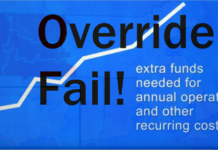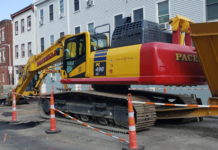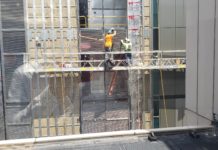by FRANK CONTE
What’s going on up on Beacon Hill?
It wasn’t long ago that the Commonwealth’s coffers were so full that an obscure 1986 law triggered a rare rebate to taxpayers. The tide has certainly turned more than six months into the current fiscal year. According to the Department of Revenue, the Commonwealth is facing a revenue shortfall of $1 billion for FY 2024.
In a letter to the legislature, DOR noted that year-to-date tax collections through the middle of January were 1 percent lower than last year.
Here’s what the letter said: “Total Tax collections for the month-to-date period were $1.287 billion, $208 million or 13.9% less than the collections during the same period in January 2023. Income Taxes totaled $1.040 billion, down $179 million or 14.7% versus the same period in January 2023.” Also declining were corporate and business taxes. Sales tax collections were the only upside increasing 17.3%.
Does the voter-approved “Fair Share Amendment” have anything to do with the slower revenue stream? Voters in 2022 decided to jettison the state’s flat tax rate in favor a progressive scheme that levies a 4 percent surcharge on taxpayers earning over $1 million on top of the primary 5 percent rate.
It may be too early to tell whether the landmark shift in policy is responsible for the coming shortfall. Taxpayers have a habit of adjusting their income to lower their burden. This is an iron law of tax policy. Then again, there are those who blame any revenue shortfall on tax cuts rather than spending. This has long been a myopic attitude dating back to the 1980s.
For time immemorial, expectations about future revenues have driven state budgets. Tax revenues estimates tend to be optimistic and lately the state has benefited from a flow of federal pandemic dollars deluding lawmakers into thinking that such windfalls have a long life. When the legislature lines up to hear experts offer their estimates, its thinking shifts on how to spend that money long before it even rolls in.
Both past and present administrations —with a helping hand from the legislature — have been on a spending spree. In a short briefing paper for the Pioneer Institute that sheds some light on the spending side, Eileen MaAnneny writes: “The single biggest factor, however, is the unprecedented growth of the state budget since FY2021. The $15 billion increase in state spending contextualizes the seemingly modest projected revenue growth of 1.6 percent for FY2024 by highlighting that the base is very inflated. Budget writers also assumed that 1.6 percent growth rate rather than the median rate of 1.3 percent proffered at the consensus revenue hearing, further inflating tax collection estimates. The sizable growth in state spending makes clear that the spending adjustments required to get the budget in balance will not be ‘cutting to the bone.’”
That’s pretty much on target: the budget base is over the top. The Pioneer Institute notes that except for Rhode Island, all the New England states are seeing revenue growth. That included Massachusetts until DOR sounded the alarm on the recent downturn.
Let’s be clear: the problem is spending. The decline in revenues, as Pioneer notes, is not due to a soft economy. The state’s unemployment rate is low at 3.2 percent, lower than the national rate of 3.7. The stock market is setting records which imply that capital gains taxes should flow into the treasury. The state’s rainy-day fund is over $8 billion.
The time to rein in spending is now. The bloated budget submitted by the Healey administration last month is a place to start.

A version of this commentary, written by Frank Conte, appeared as an editorial in the Wakefield Daily News on February 1, 2024 and in the North Reading Transcript on February 8, 2024.
















